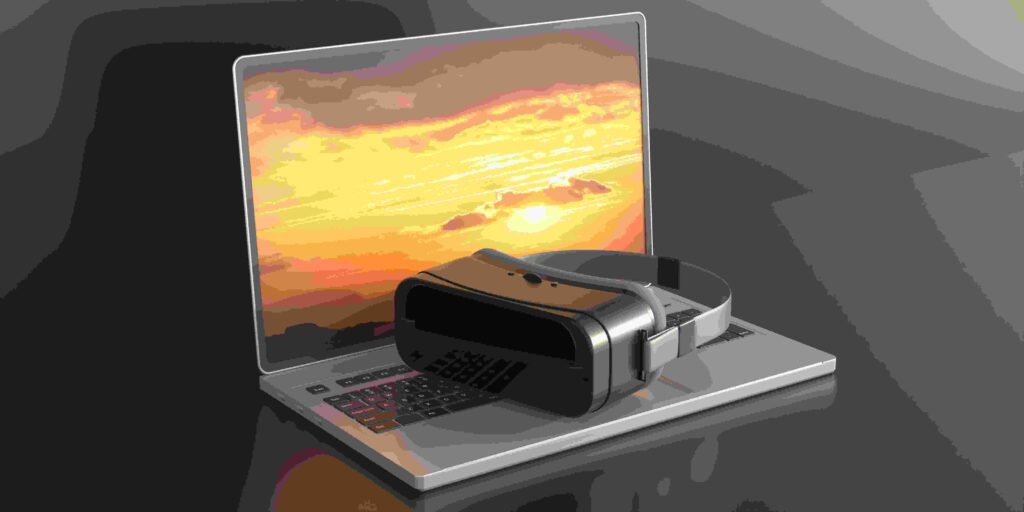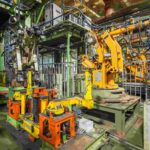Most people associate Virtual Reality and Augmented Reality with games: these technologies have been stimulating players all over the globe. However, their applications go beyond entertainment. Search terms such as “How AR and VR Are Shaping Industry Beyond Gaming” show the emerging interest in how these changes affect such sectors as healthcare, education, and retail. This article intends to open the eyes of an audience and teach them about these technologies while demonstrating how revolutionary they will be through numerous industries. This guide will take you through how AR/VR is changing the world more than that of the gaming industry.
The Power of AR and VR Technology
AR and VR, as we know it, greatly inspired and influenced several industries, excluding gaming. What is AR, then? It enhances the interaction with a real-world object by digitally adding to its views. Just point your smartphone camera that captures an object, and the information gets instantly fed into the device. VR, on the other hand, immerses users in a world that is not really there but virtual and may simulate or deny reality.
Combining these advanced technologies with increased availability and invention has made them necessary for companies looking to ameliorate processes, enhance the client experience, and develop slice-edge results.
Healthcare Revolution with AR and VR
Healthcare is an exquisite instance of the way AR/VR may be used to transform industries aside from gaming. AR and VR are revolutionizing scientific education and affecting personal care.
- Virtual Training for Professionals
Virtual environments permit clinical practitioners to simulate surgical operations or tactics without putting sufferers at hazard. This hands-on experience boosts their self-assurance and abilities, particularly for complicated operations. - Enhanced Patient Care
AR enables physicians to access a patient’s medical information in real-time during their care. For example, AR devices can improve diagnosis and quality of care by allowing doctors to track a person’s heart rate. - Treatment and Therapy
VR is also used for depression and therapy. Treatment of patients with anxiety and PTSD in VR-monitored settings benefits.
Transforming Education and Training
AR and VR have a profound effect on industries other than gaming. Imagine learning history via digital tours of historic Rome or accomplishing technological know-how experiments in a laboratory with no bodily constraints. Here are a few approaches that these technologies make a distinction.
- Immersive Learning
AR applications deliver textbooks to life. By pointing the tool at a photo in a textbook, students can view 3D animations and fashions, making getting to know interactive. - Virtual Classrooms
VR enables students to meet virtually in shared spaces. This encourages collaboration and removes barriers to learning. - Technical Training
VR environments are used to train employees in practical fields such as engineering, aviation and medicine. Trainees are able to operate complex machinery or dangerous situations in a safe environment.
Retail and E-commerce Innovations
Retail and ecommerce are another example of how AR/VR is remodeling industries beyond gaming. AR and VR revolutionize the purchasing revel by permitting manufacturers to interact with customers more.
- Virtual Try-Ons
AR allows consumers to see how clothes, glasses or makeup will look on them without having to try them on. This is a game changer in the fashion and beauty industry, especially in online shopping. - Store Navigation
AR helps customers find products in stores by creating interactive maps and directions. This saves time and improves overall purchasing efficiency. - Immersive Brand Experiences
VR allows brands to showcase their products virtually. Buyers can view the decor or take a 360-degree tour of the home itself..
Manufacturing and Design Redefined
AR and VR are transforming manufacturing by streamlining setup, maintenance tasks, and training. Here’s how AR and VR are changing industries beyond gaming in technological settings.
- Product Prototyping
Artists use VR to create 3D models. This allows teams to interact with and view materials before they are built. This reduces errors and accelerates innovation. - Real-Time Maintenance
AR glasses provide technicians with detailed maintenance instructions overlaid on the machine in real-time. This eliminates the need to read long books or rely on speculation. - Safety Training
For hazardous industries such as mining or oil drilling, VR can be used. Employees can conduct training in environments that appear to be hazardous situations. This reduces risks and promotes preparedness.

Entertainment Beyond Gaming
While gaming remains a major driver of AR/VR innovation, this technology has revolutionized other forms of entertainment, such as sports, movies, and live events.
- Immersive Sports Experiences
VR technology allows fans to watch matches as if they were sitting courtside. AR platforms provide real-time statistics and player information to enhance the viewing experience. - Interactive Film and TV
VR has changed the way movies are told. Viewers can now search for segments in virtual environments. - Events and Concerts
Live performance isn’t limited by geography. VR lets people attend real concerts or festivals, increasing global participation.
Challenges and the Road Ahead for AR and VR
It’s important to acknowledge a few challenges when exploring how AR/VR is shaping non-gaming industries. High development costs, confidentiality, and academic difficulties remain barriers to widespread adoption. As technology improves and becomes more cost-effective, these barriers may shrink. Collaboration between innovators, industry leaders and other stakeholders will be crucial to scale up these future solutions.
Closing Thoughts
AR and VR’s impact is not restrained to the gaming enterprise. It may be felt in lots of other industries. These technologies have unrivalled capability. They can revolutionize schooling, transform retail and decorate production. As AR and VR continue to conform, they’ll unlock greater opportunities by addressing problems and fostering innovation.
To stay on top of things, businesses and individuals need to look at the possibilities of AR and VR in industries other than gaming. Are you the next company to embrace this transformative technological change?



